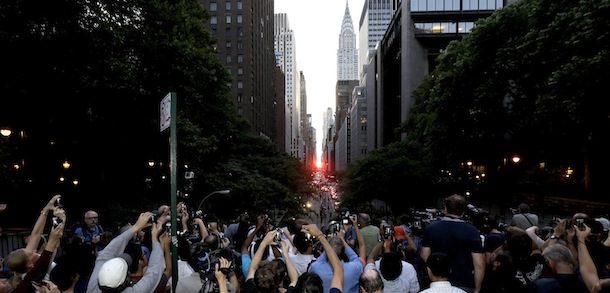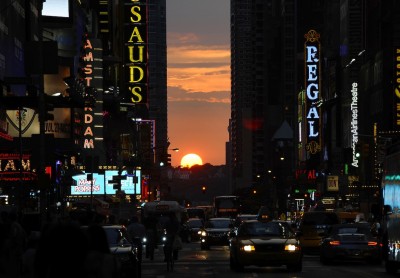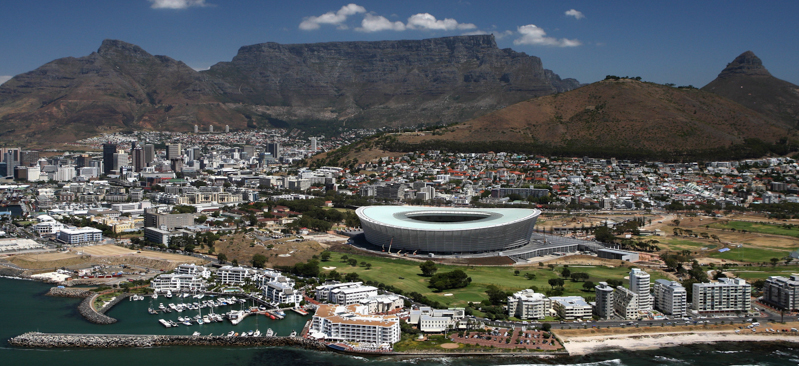Le foto del “Manhattanhenge”
Due volte l'anno a New York il Sole tramonta perfettamente allineato con le strade di Manhattan, creando uno spettacolo molto fotografato

altre
foto
Ieri a New York c’è stato il cosiddetto “Manhattanhenge”, o solstizio di Manhattan: due volte l’anno la posizione della Terra rispetto al Sole è tale che il tramonto, all’orizzonte, avvenga col Sole perfettamente allineato in direzione est-ovest alla griglia di strade che costituisce la pianta del quartiere.
La parola è nata dall’unione di Manhattan e Stonehenge, il sito neolitico in Inghilterra le cui pietre sono allineate al sole durante i solstizi. Solitamente il fenomeno accade verso la fine di maggio e tra il 12 e 13 luglio e richiama centinaia di persone che si affollano nelle strade per ammirare il fenomeno e scattare fotografie. Il primo Manhattanhenge di quest’anno era avvenuto il 29 e 30 maggio ma il fenomeno è stato rovinato dal cielo nuvoloso. Probabilmente per questo ieri sera verso le 8:30 le strade in cui si può osservare il Manhattanhenge – che sarà visibile anche stasera – erano particolarmente affollate.














